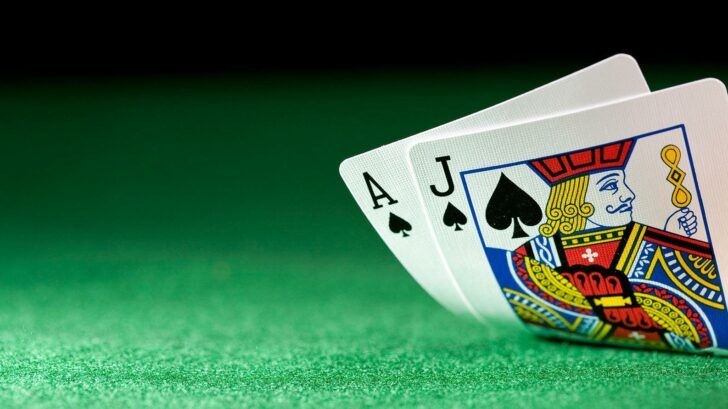Blackjack Rules: The Beginner’s Guide

Let’s go through all the basic blackjack rules for a better start and a more profitable play.
Blackjack is one of the most popular land-based and online casino games, and it’s player-based is constantly growing. Before playing for real money, you should take a look at the basic blackjack rules and facts. Also, it’s always good to read through the basics, as it makes your play much more conscious. It’s important to note that this guide deals strictly with the foundations of blackjack. These rules and options may change from casino to casino. Plus, the variants’ rules might also differ.
Blackjack rules in four sentences
Blackjack, also known as 21, is a banking game, meaning that the player bets against the gambling house or the dealer. The aim of the player is to achieve a hand with points close or equaling 21. In order to win, the player’s hand should be closer to 21 than the dealer’s. It’s played with a 52-card french deck, without jokers . As you can see, the basic blackjack rules can be covered in no more than four sentences. However, after it’s popularization, blackjack rules were expanded so it’s not that simple anymore.
Summary:
- Played with a 52-card french deck
- Aim is to achieve 21 or be closer to it than the dealer
Blackjack card values and ‘naturals’
Players have to place their bet before the deal. The player’s initial hand is formed by two face-up cards, dealt by the dealer after shuffling the deck. The dealer should have one face-up and one face-down card (hole card). If the player’s first two cards are an ace and and a card with the value 10 it’s a natural 21, or natural blackjack. In this case the dealer must immediately pay that player with 1,5x of his/her bet. When the dealer’s face-up card values 10 or 11, he’ll reveal his face-down card. If the dealer’s hand is a natural blackjack than he collects all players’ bets who don’t have a natural. There might be instances when both the dealer and the player have naturals, this is called push, tie or stand-off. At such scenario, the dealer collects everybody’s bets, except the players’ who also have a natural. Those players take back their bets.
Blackjack card values:
- Aces are be valued at 1 or 11.
- Face cards (Kings, Queens and Jacks) are valued at 10.
- The other cards are valued at the face value of the card. (10 points for 10, 8 points for 8 etc.)
Summary:
- Bets are placed before the deal
- Two face up cards for the players
- One face up and one face down for the dealer
- A natural blackjack (11+10) is an obvious win
- Push – hands with equal value
Hit, stand and bust – the most important blackjack terms
If there are no naturals at the table, the game continues by the basic blackjack rules. The player on the left is the first to decide whether to ‘stand’ or to ‘hit’. ‘Stand’ means that the player sticks with the dealt hand, therefore he’s not asking for more cards. ‘Hit’ means that the player asks for another card, in order to get closer or achieve 21. ‘Bust’ is when the player’s hand is over 21. Actually, this is just another name for losing. In this case, the dealer collects the player’s bet and proceeds to the next player.
Summary:
- Hit – take more cards
- Stand – not taking more cards
- Bust – a hand over 21 (losing)
The dealer’s turn
When all players have decided to stand (or, are busted) the dealer reveals his face-down card. At this point he can hit or stand just like the players. However, his actions are restricted by the vigorous blackjack rules. He must ‘hit’ until he reaches 17 or more and he must ‘stand’ over 17. If the dealer busts he must pay the bet of each player who has stood. If the dealer stands, he has to pay the bets of those who have a higher valued hand. These were the basic blackjack rules. Stay tuned for the upcoming parts, that’ll deal with the common side-rules of blackjack.
Summary:
- The dealer must stand at 17 or more
- The dealer must hit under 17




